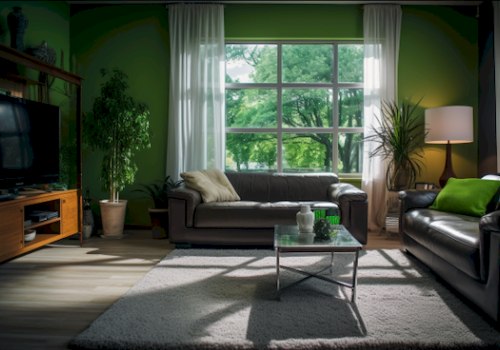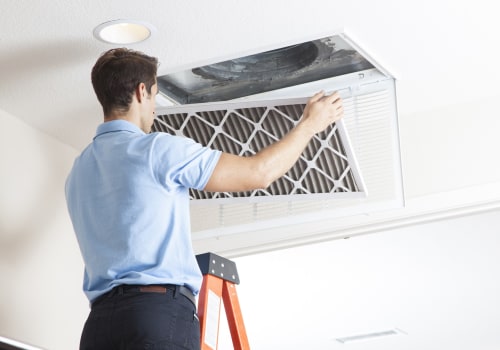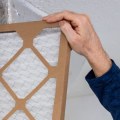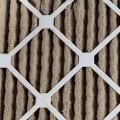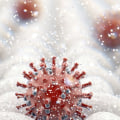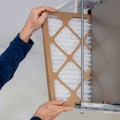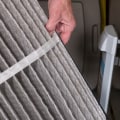HVAC UV Light Installation Services In Dania Beach FL
Dania Beach, Florida, known for its pristine beaches and vibrant atmosphere, is not only a popular tourist destination but also a place where residents prioritize their health and well-being. In the pursuit of creating a healthier environment, one emerging technology has gained significant attention - HVAC UV light installation services.
Like a ray of sunlight piercing through the clouds on a gloomy day, HVAC UV light installation brings forth the promise of enhanced indoor air quality by eliminating harmful bacteria and preventing mold growth.
In this article, we will delve into the benefits of HVAC UV light installation services in Dania Beach FL. By understanding how UV light technology works, we can grasp its potential to eliminate harmful bacteria and viruses that may be lingering within our homes or workplaces.
Additionally, we will explore how this technology can prevent mold and mildew growth, which is particularly important in humid climates like Dania Beach. Furthermore, we will discuss how HVAC UV light installation services contribute to improving overall indoor air quality while extending the lifespan of our HVAC systems.
Lastly, we will emphasize the importance of investing in these services as a means to create a healthier environment for ourselves and our loved ones.
Understanding the Benefits of HVAC UV Light Installation
The installation of HVAC UV lights in Dania Beach, FL offers numerous benefits that can enhance the efficiency and air quality of residential and commercial spaces, thereby promoting a healthier and more comfortable environment for occupants.
One of the primary advantages of this technology is its cost-effective solution to reducing energy consumption. Installing UV lights in the HVAC system helps to keep the coils clean from microbial growth, such as mold and bacteria. This allows the system to operate at peak performance without any hindrance caused by dirty coils.
A clean HVAC system with UV lights also reduces energy consumption. When dirt and grime accumulate on the coils, it creates a barrier that prevents efficient heat transfer. As a result, the system needs to work harder to cool or heat the space effectively, leading to increased energy usage and higher utility bills. With UV light installation, however, these issues are minimized as it eliminates microbial growth on the coils, ensuring optimal heat exchange and improved energy efficiency.
Moreover, HVAC UV light installation leads to better indoor air quality. The ultraviolet light emitted by these systems destroys harmful microorganisms such as viruses, bacteria, and mold spores that may be present in the air circulating through the HVAC system. This sterilization process helps prevent airborne illnesses from spreading throughout a building's occupants. Additionally, it eliminates foul odors caused by microbial growth within the ductwork or on evaporator coils.
Installing HVAC UV lights in Dania Beach provides a cost-effective solution for reducing energy consumption while enhancing indoor air quality. By keeping coils clean from microbial growths like mold and bacteria, these systems help maintain optimal performance levels without compromising efficiency due to dirty components. Furthermore, they improve overall energy efficiency by enabling proper heat transfer within the HVAC system. Lastly, by eliminating harmful microorganisms from circulating air and preventing unpleasant odors caused by microbial growths within ductwork or on evaporator coils; occupants can enjoy a healthier living or working environment.
How UV Light Technology Works
UV light technology operates by utilizing ultraviolet radiation to neutralize and eradicate harmful microorganisms, creating a healthier and safer environment.
In the medical field, UV light has various applications for disinfection purposes. UV light disinfection technology is commonly used in hospitals and healthcare facilities to eliminate bacteria, viruses, and other pathogens that may cause infections. This technology is particularly effective in reducing the spread of healthcare-associated infections (HAIs), which can be a serious concern in these settings.
UV light works by damaging the DNA or RNA of microorganisms, making it impossible for them to replicate and survive. When exposed to UV light, the genetic material in these organisms undergoes photodimerization or cross-linking, leading to their destruction. This process disrupts the reproductive cycle of bacteria and viruses, preventing them from causing harm.
The use of UV light technology for disinfection purposes has several advantages. It is a non-chemical method that does not involve the use of harmful substances or produce any toxic residue. Additionally, UV light can reach areas that may be difficult to clean manually or with other traditional cleaning methods. It provides an extra layer of protection against pathogens that may reside on surfaces or in the air.
UV light technology utilizes ultraviolet radiation to neutralize and eradicate harmful microorganisms in various settings such as hospitals and healthcare facilities. Its application in the medical field has proven effective for disinfection purposes by damaging the DNA or RNA of bacteria and viruses, preventing their replication and survival. The advantages of using UV light include its non-chemical nature and ability to access hard-to-reach areas.
Incorporating this technology into HVAC systems can contribute to creating a healthier environment by reducing the spread of infectious diseases caused by microorganisms present in indoor spaces.
Eliminating Harmful Bacteria and Viruses
By utilizing ultraviolet radiation to neutralize harmful microorganisms, the implementation of UV light technology in healthcare facilities has shown promising results in reducing the transmission of infectious diseases.
For example, a study conducted in a hospital setting found that incorporating UV disinfection devices into routine cleaning protocols resulted in a significant decrease in healthcare-associated infections and improved patient outcomes. This highlights the effectiveness of UV light in eliminating harmful bacteria and viruses.
UV light's effectiveness is attributed to its ability to destroy the DNA and RNA structures within microorganisms, rendering them unable to replicate or cause infection. The high-energy wavelengths emitted by UV light can penetrate the cell walls of bacteria and viruses, disrupting their genetic material and preventing further reproduction. This mechanism makes UV light particularly effective against drug-resistant pathogens that may be resistant to traditional cleaning methods.
However, it is important to note that UV light should be used with caution and appropriate safety precautions. Prolonged exposure to UV radiation can be harmful to human health, causing skin damage and increasing the risk of developing certain types of cancer. Therefore, when implementing UV light technology, it is crucial to follow safety guidelines such as wearing protective equipment like gloves and goggles, limiting personnel exposure time, and ensuring proper ventilation in the area being treated.
Incorporating UV light technology into healthcare facilities has demonstrated its effectiveness in eliminating harmful bacteria and viruses. By disrupting the genetic material of these microorganisms, UV light prevents their replication and transmission, leading to reduced rates of healthcare-associated infections.
However, it is essential to prioritize safety precautions when using UV light due to potential health risks associated with prolonged exposure. With proper implementation and adherence to safety guidelines, UV light can serve as a valuable tool in maintaining clean environments and improving patient outcomes.
Preventing Mold and Mildew Growth
Preventing the growth of mold and mildew is a crucial aspect of maintaining clean and hygienic environments in healthcare facilities.
Mold can thrive in areas with high humidity levels, poor ventilation, and organic material such as dust or moisture. It poses a significant health risk for patients, staff, and visitors as it releases spores that can cause respiratory problems and allergic reactions.
To combat this issue, HVAC UV light installation services in Dania Beach FL offer an effective solution.
Mold prevention has been a challenge in healthcare facilities due to the constant presence of moisture from various sources like plumbing leaks or condensation on surfaces. However, HVAC UV lights have emerged as a valuable tool in preventing mold growth.
UV light technology utilizes ultraviolet-C (UVC) rays to destroy microorganisms by disrupting their DNA structure and inhibiting their ability to reproduce. When integrated into HVAC systems, these lights sterilize the air passing through the system and eliminate mold spores before they can settle and multiply.
The effectiveness of UV light in preventing mold growth has been well-documented through scientific studies. Research has shown that UVC radiation significantly reduces airborne mold spore counts when implemented correctly within HVAC systems. Moreover, it can also inhibit the growth of biofilms on cooling coils and other surfaces where mold commonly thrives.
By incorporating HVAC UV light installation services into healthcare facilities in Dania Beach FL, administrators can take proactive measures to maintain clean air quality and prevent the potential health hazards associated with mold exposure.
Overall, preventing the growth of mold and mildew is essential for maintaining clean and hygienic environments within healthcare facilities. The use of HVAC UV light installation services offers an effective approach to tackle this issue by utilizing UVC radiation to destroy microorganisms responsible for mold colonization. Scientific studies have demonstrated its effectiveness in reducing airborne spore counts as well as inhibiting biofilm formation on surfaces prone to mold growth. By implementing these measures within their HVAC systems, healthcare facilities in Dania Beach FL can ensure the well-being and safety of patients, staff, and visitors.
Improving Indoor Air Quality
Improving indoor air quality in healthcare facilities is a crucial aspect of maintaining clean and hygienic environments. With the constant flow of patients, visitors, and staff members, these settings are more prone to airborne pathogens and pollutants that can negatively impact respiratory health.
To combat this issue, many healthcare facilities have implemented air purification systems to ensure a higher level of indoor air quality. Air purification systems utilize various technologies to filter out harmful particles and contaminants from the air. High-efficiency particulate air (HEPA) filters are commonly used in healthcare settings as they can effectively trap even the smallest particles, including bacteria, viruses, and allergens. These filters work by forcing air through a fine mesh that captures particles as small as 0.3 microns in diameter.
By incorporating HEPA filters into their HVAC systems, healthcare facilities can significantly reduce the presence of airborne pollutants that may compromise respiratory health. The importance of improving indoor air quality cannot be overstated when it comes to healthcare settings. Poor air quality has been linked to an increase in respiratory conditions such as asthma and allergies among both patients and staff members.
By investing in reliable air purification systems, healthcare facilities not only create a healthier environment for everyone involved but also demonstrate their commitment to providing optimal care for their patients. Furthermore, improved indoor air quality contributes to overall patient satisfaction by ensuring a comfortable and safe atmosphere during their stay or visit to the facility. Enhancing indoor air quality is paramount in maintaining clean and hygienic environments within healthcare facilities.
By implementing effective air purification systems such as HEPA filters, hospitals, and clinics can minimize the presence of harmful particles that may affect respiratory health. This proactive approach not only promotes better overall well-being among patients but also showcases an institution's dedication to delivering high-quality care. As research continues to highlight the significance of indoor air quality on human health, it becomes increasingly important for healthcare facilities to prioritize measures that improve respiratory health through comprehensive air purification systems.
Extending the Lifespan of Your HVAC System
Extending the lifespan of an HVAC system requires regular maintenance and proper care to ensure its optimal functionality. One way to achieve this is by focusing on extending energy efficiency. By improving the energy efficiency of an HVAC system, it can operate more effectively, reducing strain on its components and prolonging its overall lifespan.
This can be achieved through various measures such as regular cleaning of filters, sealing duct leaks, and ensuring proper insulation. Additionally, upgrading to newer, more efficient models or implementing energy-saving technologies like programmable thermostats can also contribute to extending the lifespan of the HVAC system.
In addition to extending energy efficiency, another important aspect of prolonging the lifespan of an HVAC system is reducing maintenance costs. Regular maintenance is crucial for identifying and addressing any potential issues before they escalate into major problems. This includes scheduling routine inspections by a professional technician who can clean and lubricate moving parts, check electrical connections, and test system performance.
By investing in preventative maintenance services, homeowners can avoid costly repairs or premature replacement of components. Furthermore, educating oneself about basic troubleshooting techniques and performing simple tasks like replacing air filters regularly can go a long way in reducing maintenance costs.
Extending the lifespan of an HVAC system requires a focus on two key areas: extending energy efficiency and reducing maintenance costs. Energy efficiency improvements not only enhance the overall performance of the system but also alleviate strain on its components, ultimately contributing to a longer operational life span.
Reducing maintenance costs involves investing in regular professional inspections and adopting preventative measures that minimize potential issues from developing into major problems. By prioritizing these aspects through proper care and attention to detail, homeowners can maximize their HVAC system's longevity while enjoying consistent comfort throughout all seasons.
Investing in a Healthier Environment
Investing in a healthier environment involves implementing measures that promote clean air circulation and minimize the presence of pollutants, creating a refreshing atmosphere conducive to overall well-being.
One way to achieve this is by creating a sustainable home that prioritizes energy efficiency and reduces energy consumption. By investing in HVAC UV light installation services in Dania Beach, FL, homeowners can significantly improve indoor air quality while also optimizing their HVAC system's performance.
Installing UV lights within the HVAC system can help eliminate harmful bacteria, mold, and other airborne contaminants that may circulate throughout the home. These lights emit ultraviolet radiation that disrupts the DNA structure of microorganisms, rendering them inactive and unable to reproduce. This technology effectively reduces the risk of respiratory issues and allergies caused by poor indoor air quality.
Moreover, by eliminating these contaminants at their source, UV lights prevent the buildup of unwanted particles within the ductwork and other components of the HVAC system.
In addition to promoting clean air circulation, investing in HVAC UV light installation services also contributes to reducing energy consumption. When pollutants accumulate within an HVAC system's coils or filters, airflow becomes restricted, forcing the unit to work harder and consume more energy to maintain desired temperature levels. By preventing this buildup with UV lights, homeowners can ensure optimal airflow and reduce strain on their HVAC system.
As a result, energy consumption decreases while extending the lifespan of both the HVAC unit itself and its components.
Investing in a healthier environment through measures such as HVAC UV light installation services creates a sustainable home that promotes clean air circulation and reduces energy consumption. These installations effectively eliminate harmful microorganisms from circulating within indoor spaces while preventing their accumulation within ductwork and components of the HVAC system.
Furthermore, by optimizing airflow and reducing strain on the unit, homeowners can enjoy lower energy costs while prolonging their system's lifespan. Overall, these investments not only contribute to a refreshing atmosphere conducive to well-being but also offer long-term benefits for both health and energy efficiency.
Frequently Asked Questions
How long does it take to install an HVAC UV light system in Dania Beach, FL?
The installation time of an HVAC UV light system varies depending on factors such as the complexity of the system and existing ductwork. However, understanding how UV light kills bacteria in HVAC systems and improves indoor air quality is essential for determining its efficacy.
Are there any specific maintenance requirements for HVAC UV light systems?
Maintenance requirements for HVAC UV light systems include regular cleaning and replacement of bulbs, as well as monitoring for any signs of malfunction. The benefits of using these systems include improved air quality, reduced microbial growth, and increased energy efficiency.
Can HVAC UV light systems be installed in both residential and commercial properties?
HVAC UV light systems can be installed in both residential and commercial properties. They offer numerous benefits, such as improved indoor air quality, reduction of microbial growth, and increased energy efficiency.
Are there any potential side effects or risks associated with using HVAC UV light systems?
The use of HVAC UV light systems may have potential health risks. While these systems are effective in reducing microbial growth, prolonged exposure to UV radiation can cause skin and eye damage.
How much energy does an HVAC UV light system consume and will it significantly impact my electricity bill?
The energy consumption of HVAC UV light systems varies depending on the model and usage. While they do consume some electricity, the impact on an electricity bill is typically considered negligible, making them cost-effective for installation.
